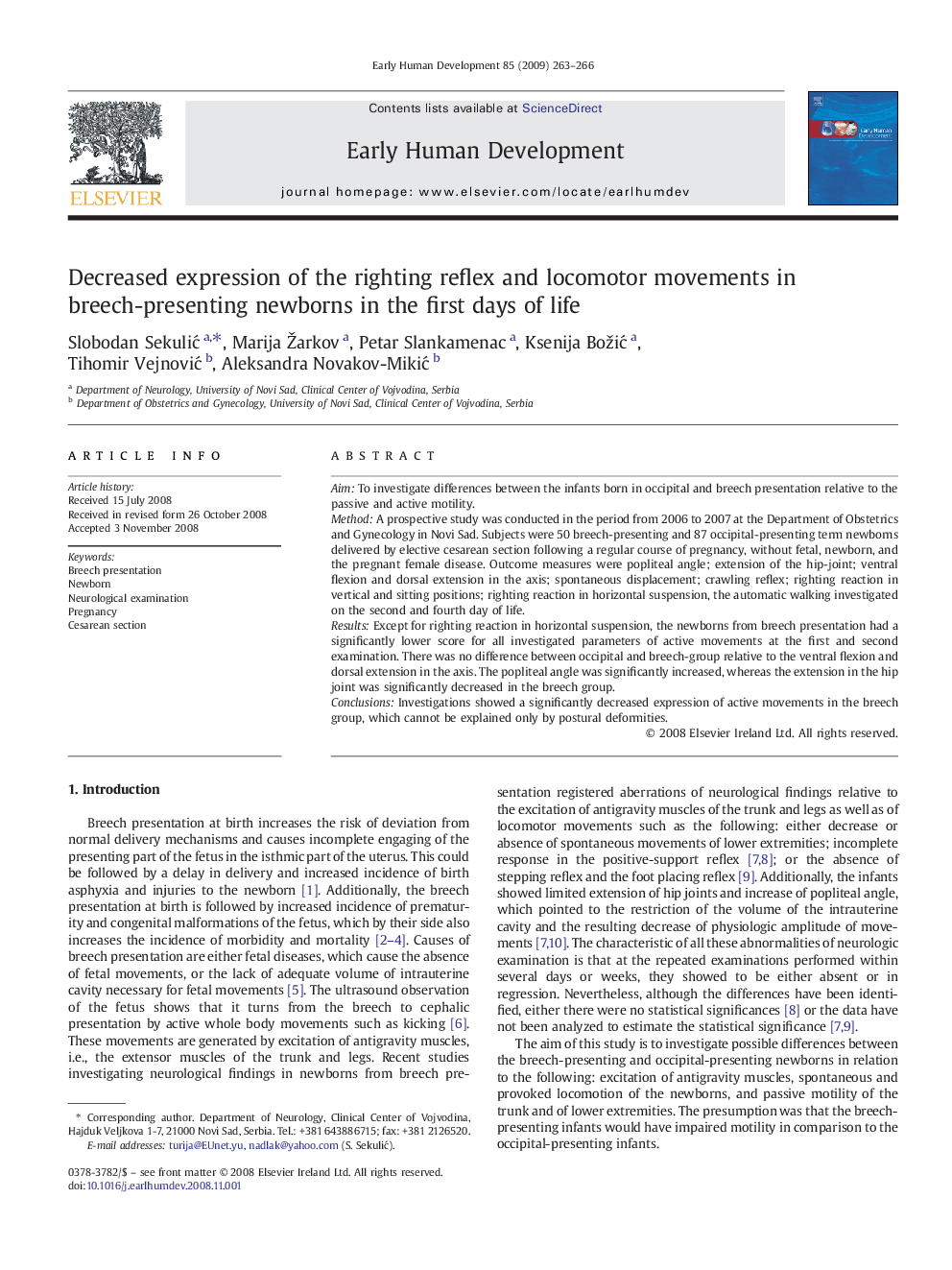| Article ID | Journal | Published Year | Pages | File Type |
|---|---|---|---|---|
| 3917753 | Early Human Development | 2009 | 4 Pages |
AimTo investigate differences between the infants born in occipital and breech presentation relative to the passive and active motility.MethodA prospective study was conducted in the period from 2006 to 2007 at the Department of Obstetrics and Gynecology in Novi Sad. Subjects were 50 breech-presenting and 87 occipital-presenting term newborns delivered by elective cesarean section following a regular course of pregnancy, without fetal, newborn, and the pregnant female disease. Outcome measures were popliteal angle; extension of the hip-joint; ventral flexion and dorsal extension in the axis; spontaneous displacement; crawling reflex; righting reaction in vertical and sitting positions; righting reaction in horizontal suspension, the automatic walking investigated on the second and fourth day of life.ResultsExcept for righting reaction in horizontal suspension, the newborns from breech presentation had a significantly lower score for all investigated parameters of active movements at the first and second examination. There was no difference between occipital and breech-group relative to the ventral flexion and dorsal extension in the axis. The popliteal angle was significantly increased, whereas the extension in the hip joint was significantly decreased in the breech group.ConclusionsInvestigations showed a significantly decreased expression of active movements in the breech group, which cannot be explained only by postural deformities.
